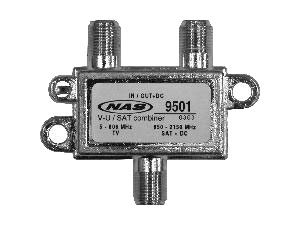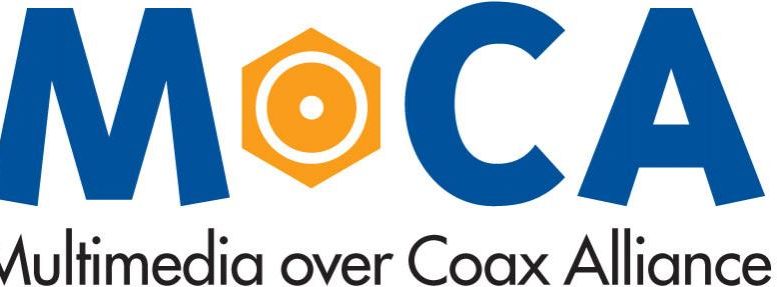In our first article on MoCA, it was stated that there is no real downside to MoCA. That’s true for almost everyone, but there are a small group of people who will be negatively impacted by using a MoCA system, especially with DIRECTV’s implementation. DIRECTV didn’t always offer local channels, and when they did, it took years before the majority of channels were in HD. In the meantime, DIRECTV offered the AM21 Antenna Module which fully integrates off-air channels into the DIRECTV DVR. This is a great solution and offers the best fidelity of any setup, as the signal is not re-processed for use on a DIRECTV satellite.

However, getting off-air reception to every TV in the house requires that an antenna cable be run to every TV. In the past, it was possible to use a diplexer like the one pictured above. This allowed the satellite signal and the off-air signal to “peacefully coexist” on the same cable. A separator placed at the end of the line split the cable so one end went into the satellite receiver and the other end went into the AM21.
Why does this work?
Diplexing is possible because a cable can carry a wide range of frequencies. Some of these frequencies are used for satellite TV, and some are used for over-the-air. It’s like a radio which can receive AM and FM signals from the same antenna; the two don’t overlap so it’s not a problem. As long as you used high-quality RG6 wire for your runs, you didn’t have any problem. MoCA works the same way. It uses frequencies that aren’t needed for satellite, and allocates them for use by network information. The two sets of frequencies don’t overlap so it’s not a problem. In fact, a MoCA adapter really isn’t much more than a diplexer and combiner in one, putting the network data where it won’t interfere with the satellite signal.

Unfortunately even though a cable can carry a lot of information, it can’t carry everything. Some of the frequencies needed to carry over-the-air television are used by the MoCA adapter. Look at the diagram above. The dark red area is where DIRECTV’s satellite signal sits, while the blue area is where MoCA data sits. AS you can see, the yellow area (which shows the OTA frequencies) is also used by MoCA, and if you try to put network data and over-the-air at the same time… it just doesn’t work. So, there is a small downside to MoCA if you’re used to diplexing. It’s not going to make you feel better to know that very few people still diplex with DIRECTV if you’re one of the people who does it. There’s no getting around the fact that if you want over-the-air antenna, satellite and network, you’re going to need two cables. Either the antenna or network will need its own cable.




